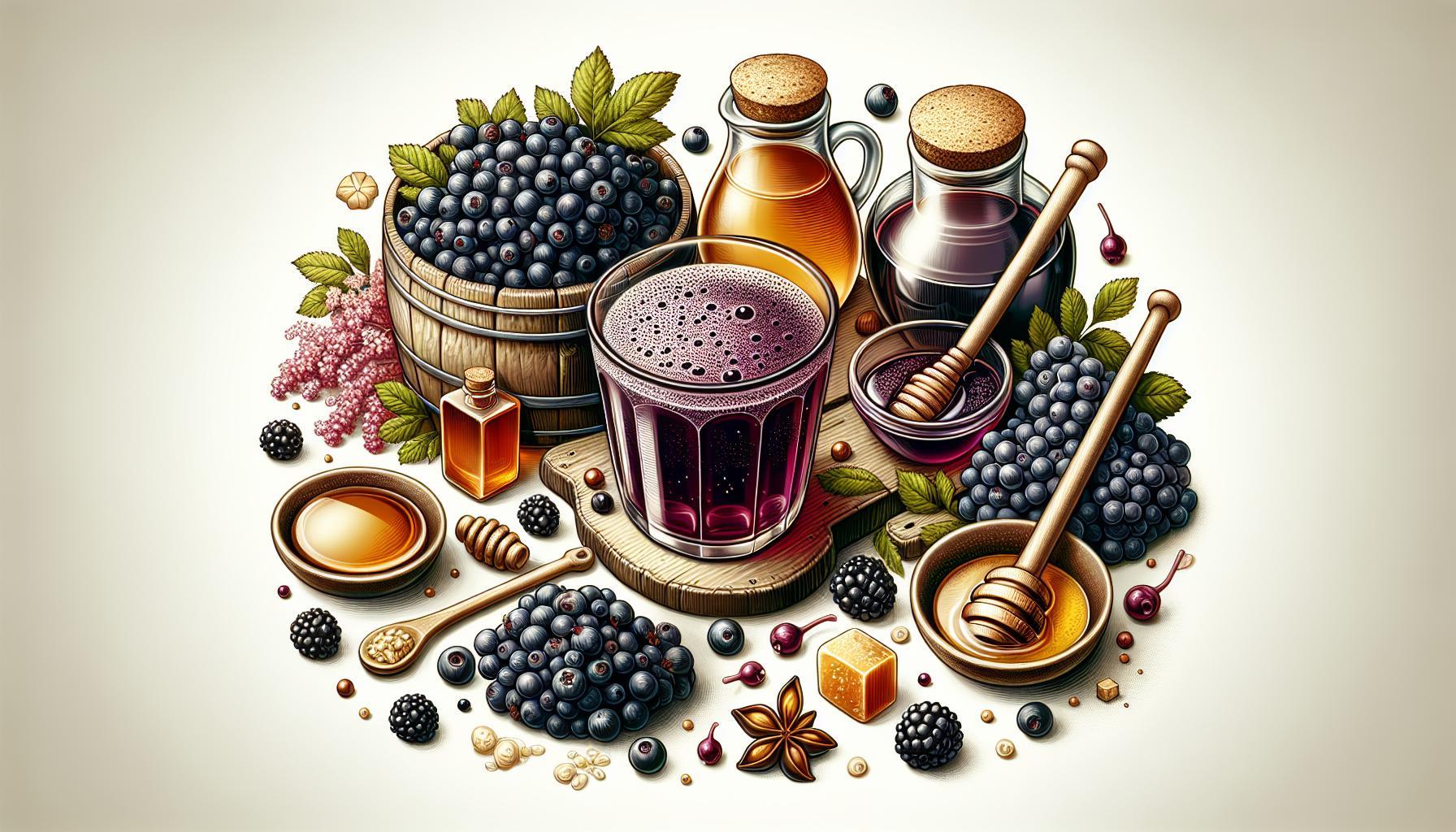I have a truly ambrosial treat for you today! It’s a recipe for elderberry mead, a soul-warming tipple that I hold dear to my heart as it harks back to halcyon days around the hearth with my family. Let me tell you before we commence, this delightful concoction is an adventure of flavors that will transport you through fragrant orchards and honey-laden fields on a journey of unforgettable gastronomic delight.
Ingredients List
Gather forth your basket and fill it with the following:
- 12 cups of wild elderberries
- 15 pounds of raw honey
- 4 gallons of distilled water
- 1 packet of champagne yeast
- 1 teaspoon of yeast nutrient
Remember, this is a potion of taste so employ the best quality ingredients you can manage.
Instructions
To start this enriching culinary odyssey, clean your elderberries thoroughly to banish any uninvited insects or residual dirt. Next, strip them from their stalks and introduce them to a large pot.
Pour in distilled water till the elderberries are submerged, then seek your stove’s assistance in bringing the mixture to a boil. As the elixir bubbling, take a moment to inhale the fragrant aroma of nature’s nectar.
After allowing to resonate for around 30 minutes, turn off the heat source and let the blend cool.
While the mixture cools, place your honey in a second large pot and gently heat it until it becomes runny.
Combine the elderberry and honey mixtures into one large fermenting bucket. Add in the yeast and yeast nutrient, give it a gentle stir.
Lay the lid on top but don’t seal it too tight to allow the gases to escape during fermentation.
Allow patience to play its part for the fermentation process, which generally spans a fortnight.
Cooking Time & Servings
This elderberry mead recipe comes together in around 2 weeks of fermentation and yields approximately five gallons of mead.
Nutritional Information
When it comes to the nutritional value of elderberry mead, we’re dealing with a veritable treasure chest. This delectable drink brims with the healing power of elderberries and the health-promoting activity of honey.
Per serving (approximate):
- Calories: 250
- Carbohydrates: 25g
- Protein: 0g
Tips and Tricks
Appreciating that our dietary choices are as diverse as our palettes, consider these alternatives:
- Vegan honey or agave nectar can replace traditional honey for those following a plant-based diet.
- For a non-alcoholic variant, you can replace the champagne yeast with a kombucha SCOBY to get a fruity, slightly fizzy, non-boozy option.
Remember, for the best results, use fresh and locally sourced ingredients whenever possible.
In conclusion, this recipe not only tantalizes your taste buds…
…but also weaves a story of nature and tradition with every sip. Feel free to tweak the ratios as per your taste. Perhaps a little more honey or a smidgen less elderberry, whatever tickles your fancy. Do share your creative adaptations and toast-worthy tales in the comments below.
Frequently Asked Questions
Can I use dried elderberries for this mead recipe?
Absolutely! Though fresh elderberries are optimal, dried ones make a good substitute.Do I need specialist equipment to make mead?
Most of the equipment you need is likely already in your kitchen. A fermenting bucket is the only specialist piece.What’s the shelf life of elderberry mead?
If stored correctly, sealed and in a cool dark location, the elderberry mead can last for years.How do I know if my mead has fermented properly?
A successful fermentation will present itself with a slightly fizzy sensation, mild alcohol flavor, and decreased sweetness.What pairs well with elderberry mead?
This delectable brew pairs garner great compliments when consumed with rich cheeses, hearty stews, and grilled meat.


